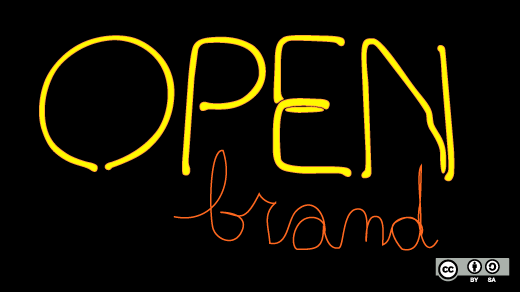In the extremely overcrowded open source marketplace, marketing managers find it difficult to think of innovative ways to raise their brand's visibility. With so many brands jostling for attention, the low signal-to-noise ratio might tempt marketers into adopting an "everything but the kitchen sink" approach, attempting every idea from the marketing playbook in the hope that one will stick. However, this would be a mistake: careful niche marketing offers greater opportunities for brand advancements and market share. Let's see how.
Brand divergence: It’s a good thing!
"Convergence" has been a buzzword for many years now. Wikipedia defines it as "the tendency for different technological systems to evolve towards performing similar tasks," and it's been a driver for some key business mergers (think: AOL and Time Warner) in the past, particularly in the field of IT hardware and software. The concept of an all-in-one product that serves every need and category is one that continues to attract entrepreneurs and businesses looking to make their mark in the marketplace.
As Al and Laura Ries successfully argue in their book "The Origin of Brands," however, convergence appears to be more and more of a myth. The authors give examples of numerous real-world products and brands that have failed in their attempt to bridge multiple categories, such as the Handspring Visor and the Zhone Box. Rather, the authors argue that the best strategy to create a successful brand is divergence rather than convergence, specialization instead of generalization. They suggest that narrowing one's focus to a specific user segment or market category is more likely to result in success than broadening it to encompass every possible category or segment.
Open source as a driver for divergence
Applying this thinking to the open source CMS market produces some interesting insights. Open source, due to its character as an open system, allows thousands of CMS vendors and projects to blossom. As a result, the market is overcrowded, with a huge array of products competing for limited consumer attention—consider that CMS Matrix, a free listing of open source CMS products, has more than 1150 listings, with more added every week.
In this overcrowded market, CMS vendors are learning that the only way forward is specialization. In other words, by virtue of its very nature, open source is a driver for divergence. For an open source CMS vendor looking to increase its market share and brand visibility, this natural pressure towards divergence, rather than convergence, offers a key opportunity for brand building and market share. We're already seeing major CMS vendors attempting to distinguish themselves from the pack by focusing on key attributes of their product, designed to appeal to specific user segments:
- Alfresco calls itself the "document management system for the enterprise," focusing specifically on features designer for enterprise customers.
- Drupal's appeal lies in its "community" orientation, with its marketing collaterals focusing on the large variety of community modules, themes, self-service supports, and collaborative development models.
- Magnolia brands itself as "simple open source content management," highlighting its WYSIWYG user interface and usability benefits.
- Wordpress calls itself "web software...to create a beautiful website or blog," drawing attention to the product's personalization features and appeal for the individual hobbyist/small business segment.
The natural offshoot of this specialization is the creation of new categories in the open source CMS space. For open source CMS vendors, this divergence creates new opportunities for them to distinguish their brand from the rest of the pack.
Long tail branding: It’s all about the buzz!
Let's also look at why the open source marketplace is so crowded in the first place. There are a number of reasons for this, such as the availability of free and powerful programming toolkits, easy source code access due to OSI licensing, and the global reach of the Internet. These factors have created an environment where even individual hobbyists or small two-person firms can create and distribute products for the mass market with minimal effort and risk.
In their book, Al and Laura Ries suggest that a market will typically support only two major vendors, one at the high end and one at the low end. They offer numerous examples of this: Swatch versus Rolex, Target versus Kmart, and others. But the question is, does this actually apply in the open source environment?
I think not. Rather than the two-vendor market proposed by the Rieses, the open source marketplace more closely resembles the "long tail" suggested by Chris Andersen in his book "The Long Tail: Why The Future of Business is Selling Less of More".
Again using the open source CMS marketplace as an example, it’s clear that the long tail model is a good fit for this marketplace. There are the "hits", the small minority of very successful products like Joomla, Drupal, and Alfresco. And then there are the "niches", the tail of large, specialized products that individually have a low installed user base and public profile but collectively make up a significant majority of the marketplace.
Drip sales and social marketing
This perspective also suggests some key insights about marketing and branding in the ong tail. As Anderson points out, if you're in the long tail, the best way to build your brand is through the use of marketing techniques based on extensive use of Internet technologies. Some of the key techniques available include buzz marketing, viral marketing, low-intensity, low-cost "guerrilla" marketing, and search engine optimization. In most cases, these techniques make use of social networks and media, such as Facebook, Twitter, MySpace, and others. And they offer a cost-efficient way to precisely target and reach an audience.
Look at the CMS marketplace and you’ll see that CMS vendors are following Anderson’s recommendations to the T. For example, Magnolia CMS makes extensive use of Twitter and Facebook to communicate with both existing and new users, using these social media services to disseminate information about new product releases, case studies, events, and company news. Company executives blog frequently on technical and business topics related to Magnolia CMS, and the official product website is heavily optimized for search engine indexing.
The other key point to note about the long tail is this: It doesn't matter how small you are, you can still survive and even thrive. Anderson's research throws up numerous examples of products (movies on Netflix, music in iTunes) that failed to achieve popular appeal, yet still make money for their manufacturers by virtue of small "drip" sales in the long tail. With the widespread availability of search engines and social filters, these products can still be found by those who will appreciate them.
Simple is efficient? No. Simple is beautiful!
All marketers understand that the power of a brand lies in its ability to evoke emotion from consumers. Emotions can drive purchase decisions, and a brand that is able to evoke them effectively has a strong market advantage over its competitors. Consider Apple: The emotions evoked by this brand are so powerful that the company is able to sell its products at a significant premium over its competitors, even though competing products may boast more bells and whistles.
A brand that evokes powerful emotions also serves as a buffer in bad times. Here's an example: When news of the iPhone 4's antenna problems surfaced in July 2010 and were subsequently confirmed by the company, sales remained steady, with more than 3 million iPhone 4 units sold during the relevant six-week period. The images and emotions evoked by the Apple brand were strong enough to counter the bad news, offering compelling insight into the power of emotions when building brands.
The transition from B2B to B2C marketing
What does all this have to do with open source marketing? In the past, marketing an open source product was more a B2B affair. It involved providing information and insight into business benefits, and assumed that purchase decisions were made pragmatically based on the "best fit" for the customer. As a result, product marketing was more about ensuring that all relevant technical information was available for a customer's decision-making process, and little attention was paid to emotional appeals and social recommendations.
More and more, though, open source marketing is becoming B2C marketing. End-users don't want to be educated only about dry business benefits; they're also looking for simplicity, elegance, usability, and social engagement. Look again at the CMS marketplace, and you’ll see that Wordpress promises "beautiful sites," Magnolia offers "simplicity," and Drupal highlights its "community."
More and more, CMS marketing is transitioning from B2B marketing into B2C marketing. It’s becoming less about business benefits and more about identifying and tapping into the needs of end-users, using emotional themes to make the brand "stick."
The top of your mind...has space for many brands
A key traditional measure of brand awareness is Top of Mind Awareness (TOMA), which is "the brand consumers think of first to fulfill a need". So, for example, if you're thinking of buying a car, that brand that comes first to mind would depend on your specific need. Perhaps Toyota for "reliability," Mercedez-Benz for "social status," and Porsche for "adventure" and so on.
In the open source marketplace, these traditional theories of brand awareness and recognition also take a hit. Transparent and easy information flows through social networks, coupled with high searchability via Google and other search engines, make it easier for prospects to search for open source offerings that meet their needs. A consumer can recognize and recall multiple different brands meeting the same need, and can easily find information on their relative strengths and weaknesses prior to making a purchase decision, thanks to the transparent nature of open source software.
This makes a marketer's job both easier and more difficult. On the one hand, because information in an open source marketplace is easier to access, consumers are more likely to find and evaluate a product proactively, without needing to be explicitly led to it. On the other hand, the relatively-unorganized nature of the marketplace and large number of products, all apparently serving the same segment, can end up confusing prospects and driving them away. Using emotional themes to connect with consumers and leveraging social media tools to filter brands can help marketers in making their open source product brands stand out.
Conclusion
Branding in the open source marketplace is undergoing a change. Traditional models are falling by the wayside, and newer models, which stress brand divergence, low-intensity social marketing, emotional branding, and easy access to information, are the order of the day. In this rapidly-shifting environment, clever marketers can use some of the ideas suggested in this article to raise the profile of their open source brand and use it to grow their customer base.






3 Comments